Abaca Fulfills The Promise
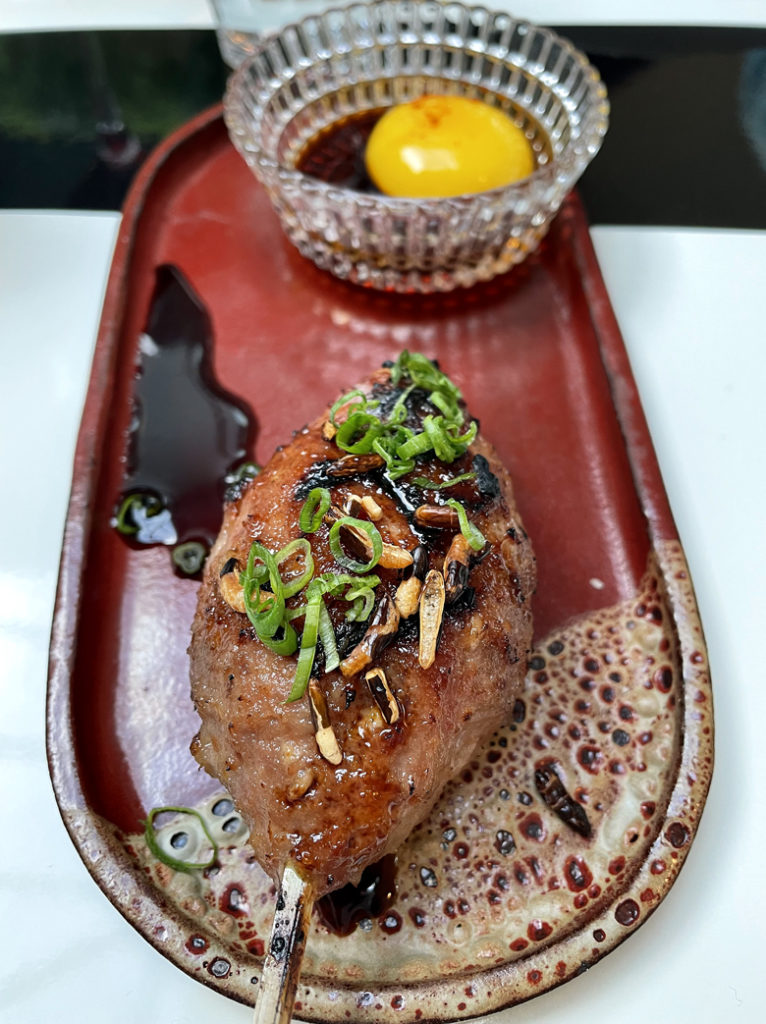
For more than 15 years, food writers like myself have predicted that Filipino cuisine would be the next big thing.
After all, Filipinos have been immigrating to California for more than a century, and Filipino Americans make up one of the largest Asian-American ethnic groups in the state. Certainly, the time was nigh that its cuisine get the attention and due that Chinese, Japanese, Thai, Indian and other Asian cuisines have long had here.
While there have been plenty of mom-and-pop Filipino eateries over the years, however, there had never been an upscale restaurant to take Filipino cuisine to new heights.
Until this August, when the groundbreaking Abaca opened its doors at Fisherman’s Wharf in San Francisco.
Housed in the new Kimpton Alton Hotel, Abaca is the creation of Chef-Owner Francis Ang, his wife, co-owner and director of operations, Dian Ang, and Chef de Cuisine Danica Alves.
Ang may be best known for his star turn as pastry chef at the Fifth Floor in San Francisco, which earned him a “People’s Best New Pastry Chef” honor from Food & Wine magazine. But his talent on the savory side began to shine brightly with his pop-up Pinoy Heritage, and only escalated during the pandemic with his beautiful, multi-course feasts packed immaculately for takeout.

Abaca, named for a native Philippine banana species, takes the soulful, homey, yet bold tastes of traditional Filipino cuisine and infuses it with California flair and freshness. That’s what I found when I dined last week. While my husband and I paid our own tab, Chef Ang added some of his signature dishes on the house.
The restaurant’s clean, white interior brings the outside in with a huge skylight ringed with cascading ferns. There’s also a large patio at the front. While you might request outside dining when making your reservation, just know that it’s not guaranteed, as we found out. Turns out a private party had booked the entire patio that night, to which we weren’t alerted, so we ended up eating indoors for the first time since the pandemic began. Fortunately, with San Francisco requiring proof of vaccination indoors at restaurants and a low infection rate of late, we felt fairly comfortable doing so.
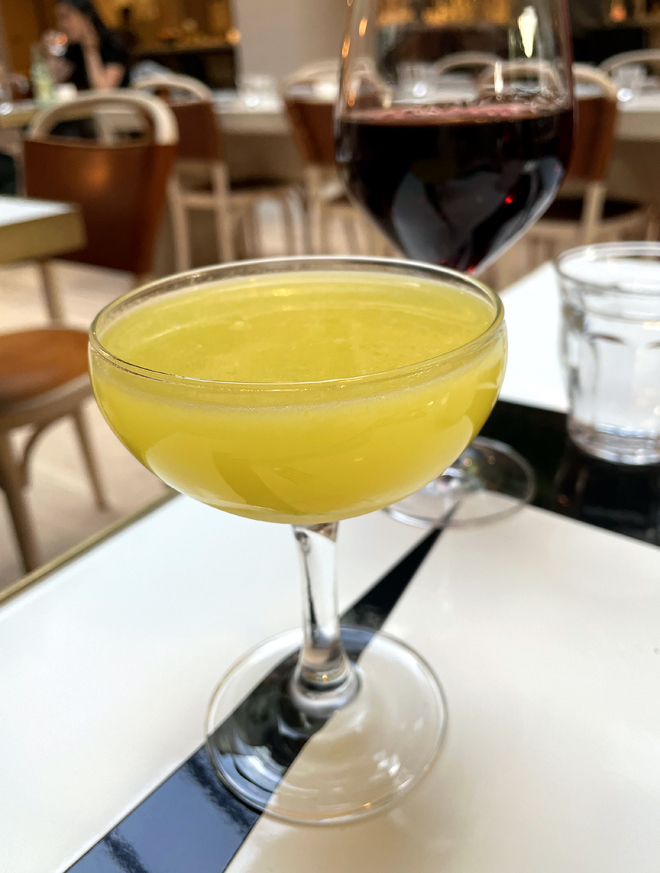
Specialty cocktails are $15 each. The Local Word — Hendricks Gin, Green Chartreuse, absinthe, pineapple and calamansi — is a sharp sip with a slightly bitter edge, all the better to wake up your palate for what’s ahead. An amuse of tiny profiteroles followed, adorned with coconut ash, caviar and pickled Buddha’s Hand. Savory, briny and just ever so sweet, it was a fitting reminder that this is a chef adept at all stations in the kitchen.
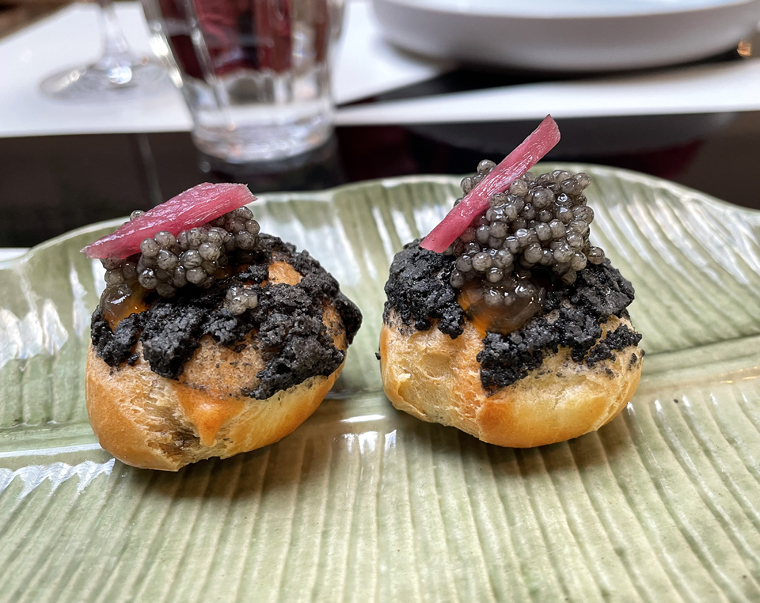
The food is all meant to be shared. The Longganisa Pork Sausage ($10) is already quickly becoming a classic at Abaca. The skewered fat, juicy, sweet, smoked sausage is composed of coarsely ground pork. If you’ve enjoyed Portuguese sausage in Hawaii, the taste is hauntingly familiar. A raw egg yolk in a small dish of cane vinegar comes alongside. Slide the sausage off the skewer, then use the end of it to pierce the yolk and mix it into the vinegar, creating an unctuous sauce to dip the sausage into.
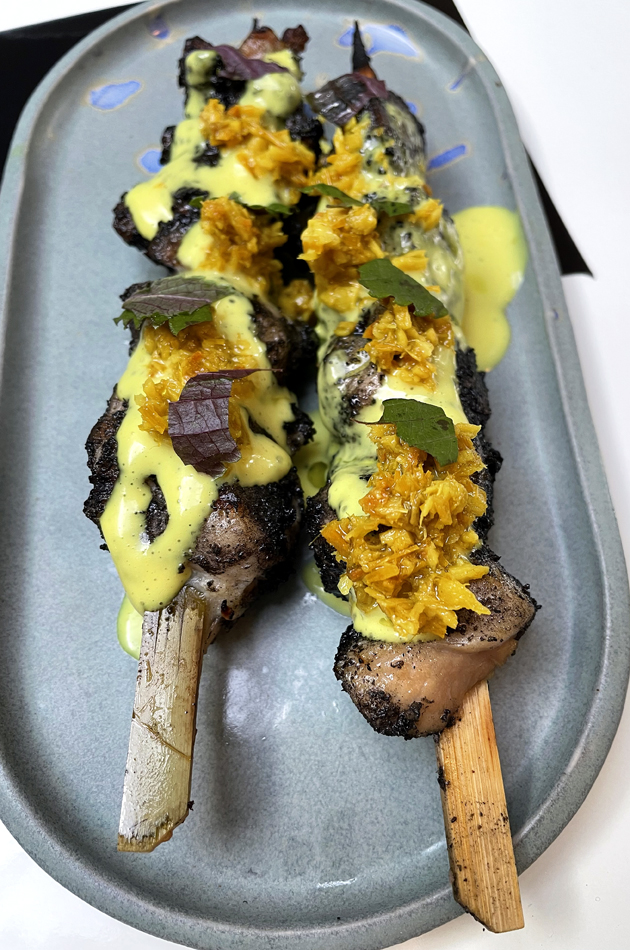
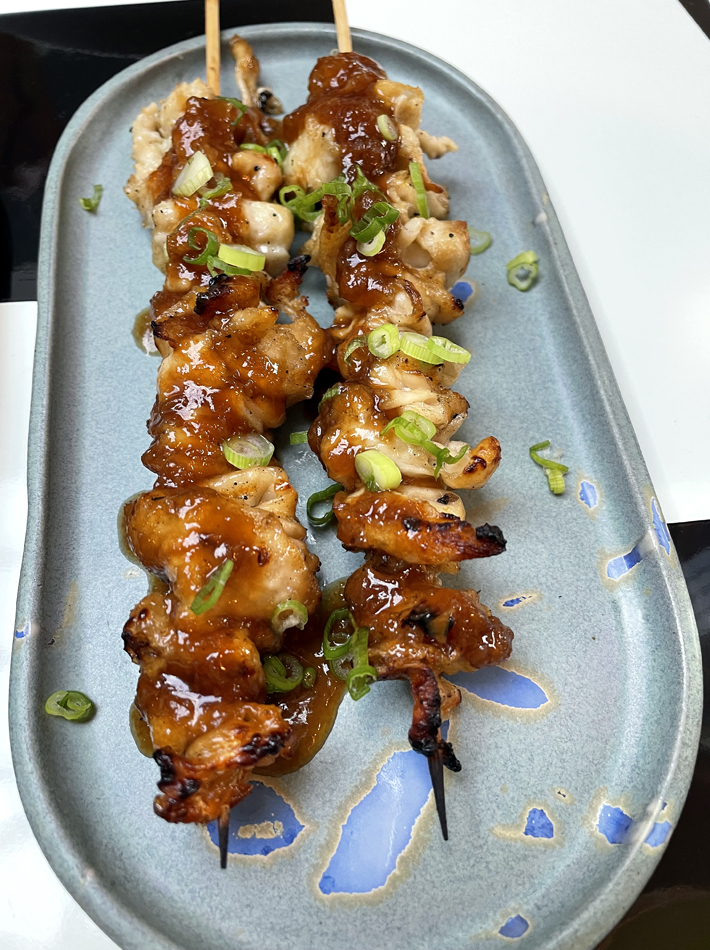
Chicken Pyanggang skewers ($11) are redolent of turmeric. The charred chicken chunks are smoky, super juicy, and sweetened with burnt coconut marinade. Chicken Skin skewers are sometimes available as a special, as on this night. If you’re expecting the crackling crisp skin of Japanese yakitori skewers, you may be disappointed. The ones here are more flabby and chewy. They have a wonderful smoky succulence, though.
You might be tempted to order only one Pork Steamed Bun ($8 each) to share. But do yourselves a favor, and definitely order one each. These are incredible, and after one bite, you will kick yourself if you only have half of one left to enjoy. The striking buns are charcoal colored and pillowy soft. They snuggle a thick slab of pork belly and refreshing pineapple kimchi that adds a lift to all that richness.
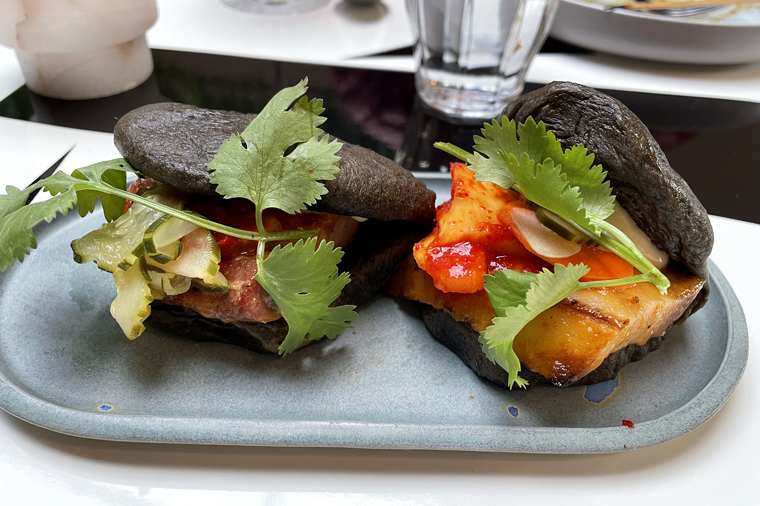

Octopus pieces tasted like they were breaded in sweet rice flour before fried, giving them an almost mochi-like crisp-chewiness. They are served on a dark puree of perfectly smooth eggplant that like many dishes here was infused with smokiness from live-fire cooking.
Ang’s pastry background shows in his plating. So many dishes are full of luminous color, thanks to garnishes of shaved radishes, edible blooms and ripe orange-hued calamansi halves. That’s readily evident in the rice noodle dish of Smoked Chicken Palabok ($19). The soft, chewy noodles are hidden under a hail of crispy rice noodles, plus pieces of smoked chicken, summer beans, pickled beets, and teeny soft-boiled quail egg halves. There’s a lot going on here, making each forkful a little different.
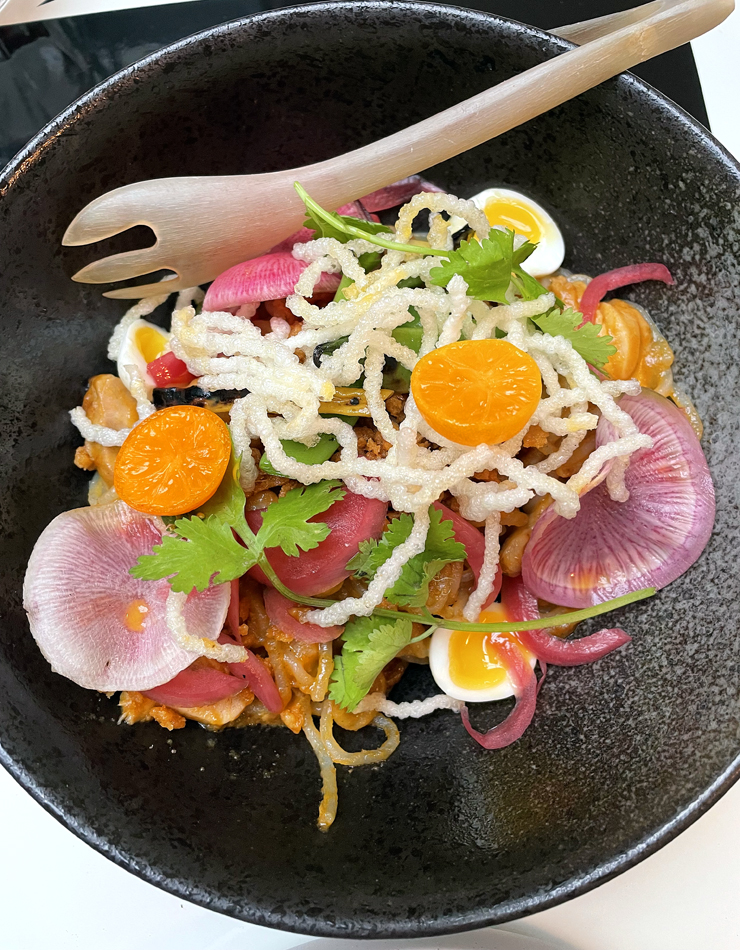
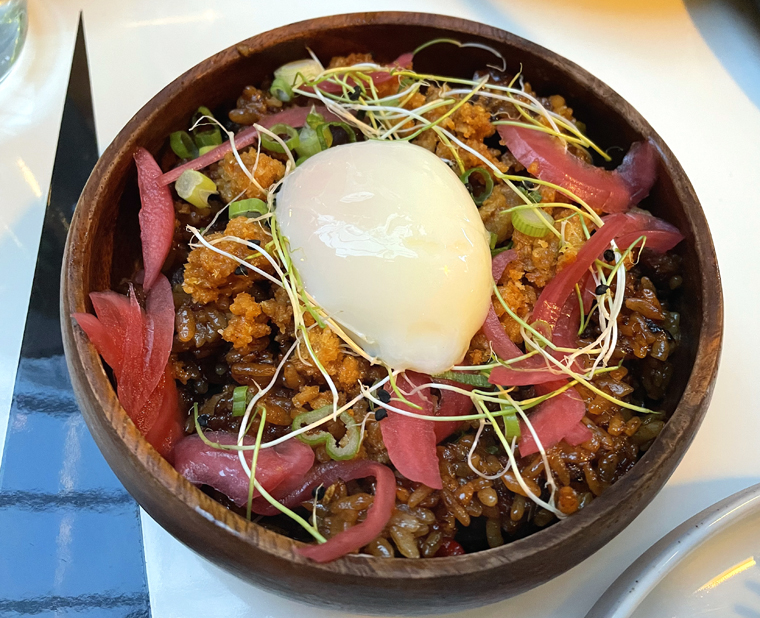
To eat Lola’s Pork Lumpia ($16), roll one up in a Bib lettuce leaf with fresh mint, then dip into apple ketchup accented with diced, fermented mango. The meaty lumpia are golden, crisp, and definitely hard to stop at just one.
Sisig Fried Rice ($16) boasts lovely little crisp rice bits that we all covet, along with chicharones. A poached egg crowns the top. Pierce it, and mix the runny yolk into everything. It’s a super savory tasting dish, hiding pieces of fried pork belly.
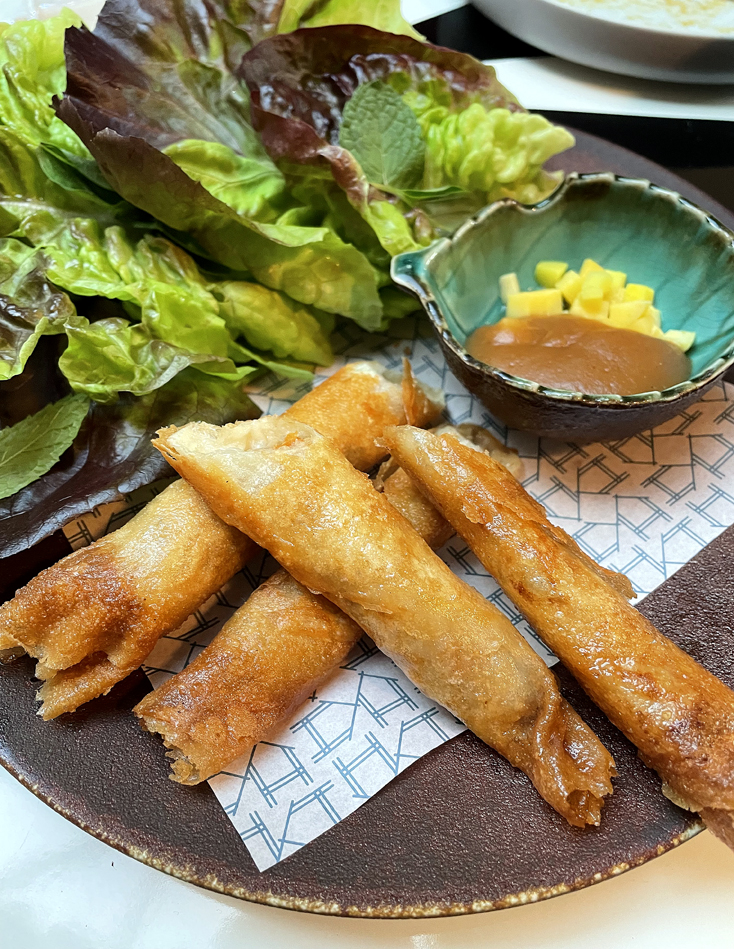
A couple of large-format dishes are offered. Among them is the Squid Relleno ($48). It’s an entire squid, tentacles and all, with the tender, toothsome body stuffed with Filipino chorizo, which is much milder than the Mexican version and not paprika-infused like the Spanish type. Instead, it’s reminiscent of the longganisa — a little sweetly seductive. There are pieces of Canary melon here and there, adding a bright quenching sweetness, as well as crunch. Creamy, citrusy calamansi aioli dot the plate with cherry tomatoes to round out the plate. While I’ve had stuffed calamari in the past, this squid relleno certainly stood apart for its originality.
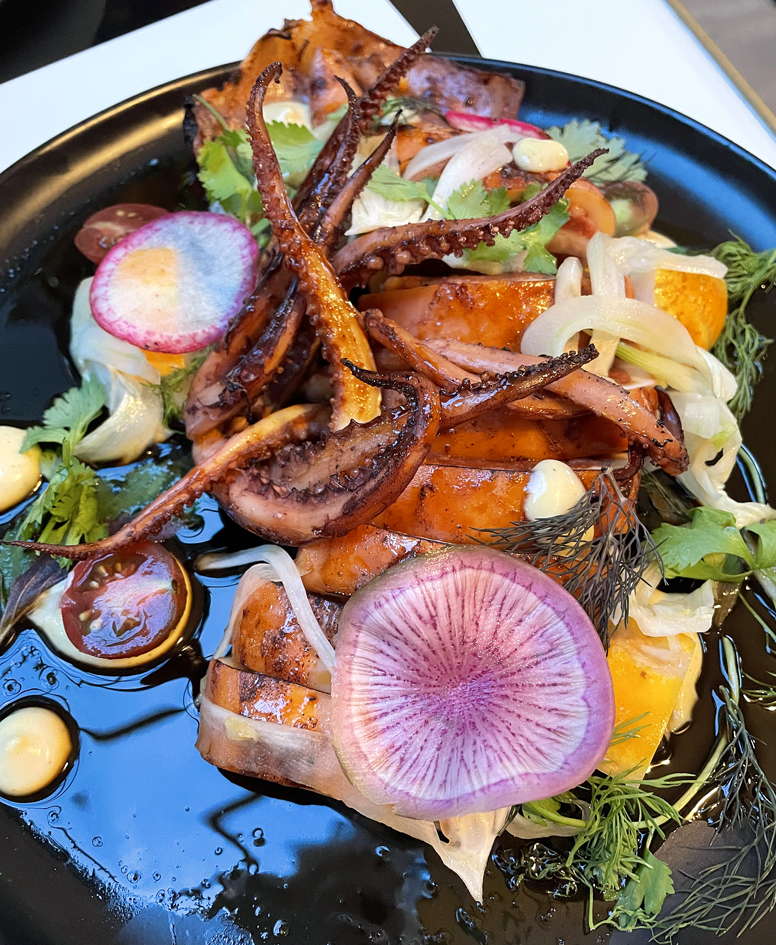
Before dessert, we were served an intermezzo of black tea panna cotta with calamansi ice, and brown-sugar tapioca balls. The panna cotta with the tapioca tasted like a favorite boba tea — milky, sweet, but with the tea flavor coming through strongly. Frosty and floral-tart, the calamansi ice cleansed the palate at the same time.
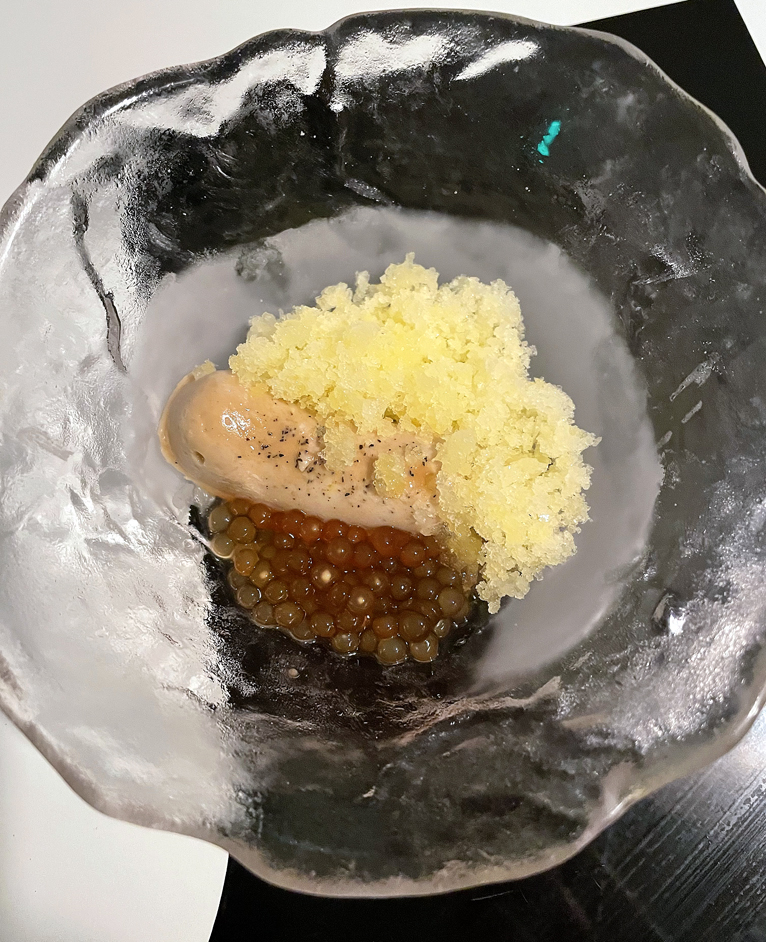
If I had the room, I would have ordered one of every dessert. As it was, we honed in on the Carioca “Rice Donuts” ($12) because who can ever resist donuts, right? These are more like fritters than the rounds with holes in the center that you might readily picture. In fact, at first glance, you might mistake the artsy plate for a dish of Chinese-style chicken nuggets. The two-bite fritters had a substantial, burnished, crunchy exterior that gave way to a custardy-chewy, mochi-like center. A finely chopped cashew crumble to roll the donut in added a nice nutty taste., while a scoop of passionfruit sorbet was invigorating.
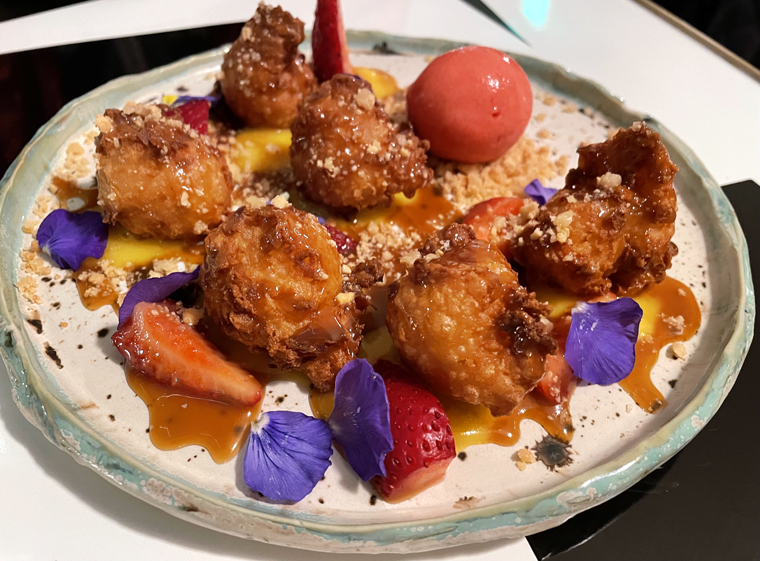
The Bay Area has tarried long for a Filipino restaurant worthy of destination-dining. Abaca was worth the wait.
